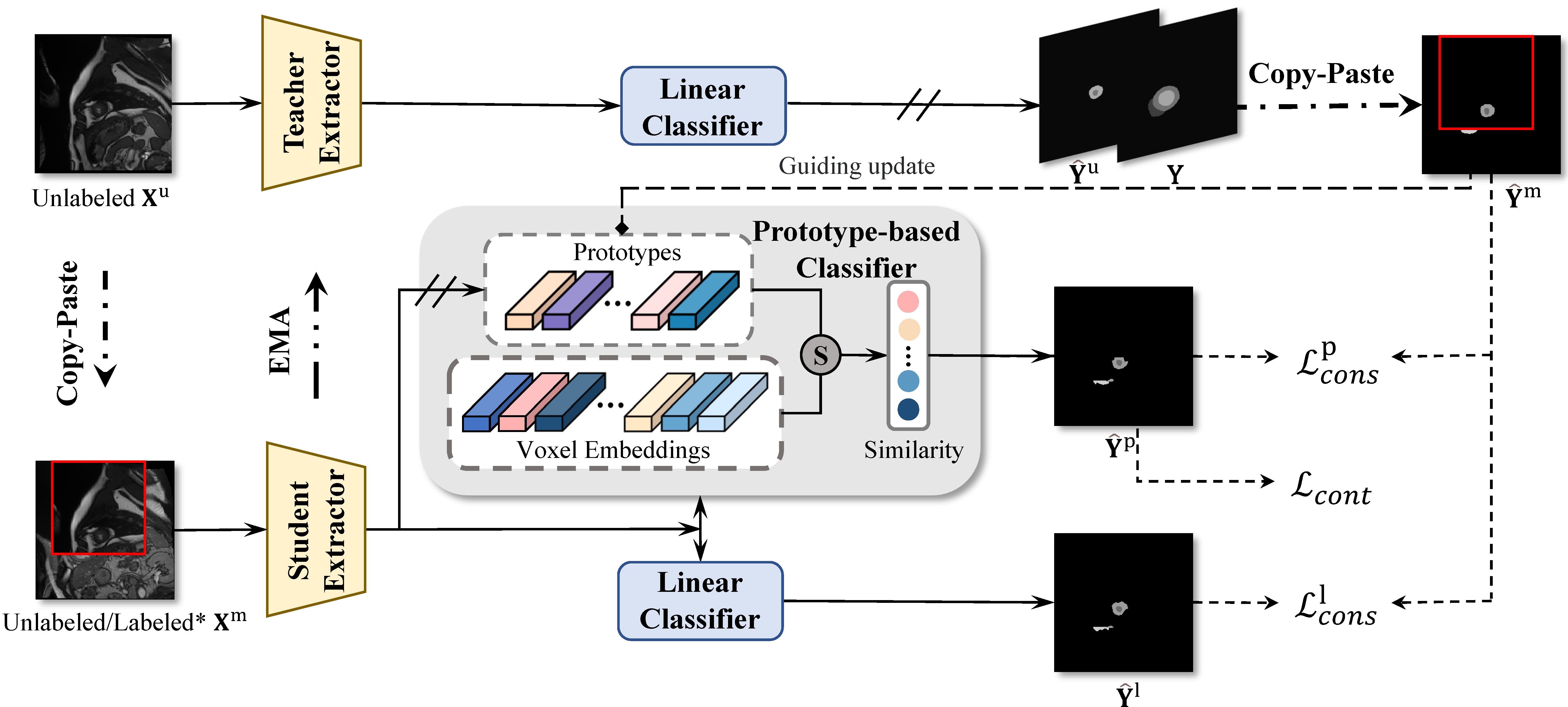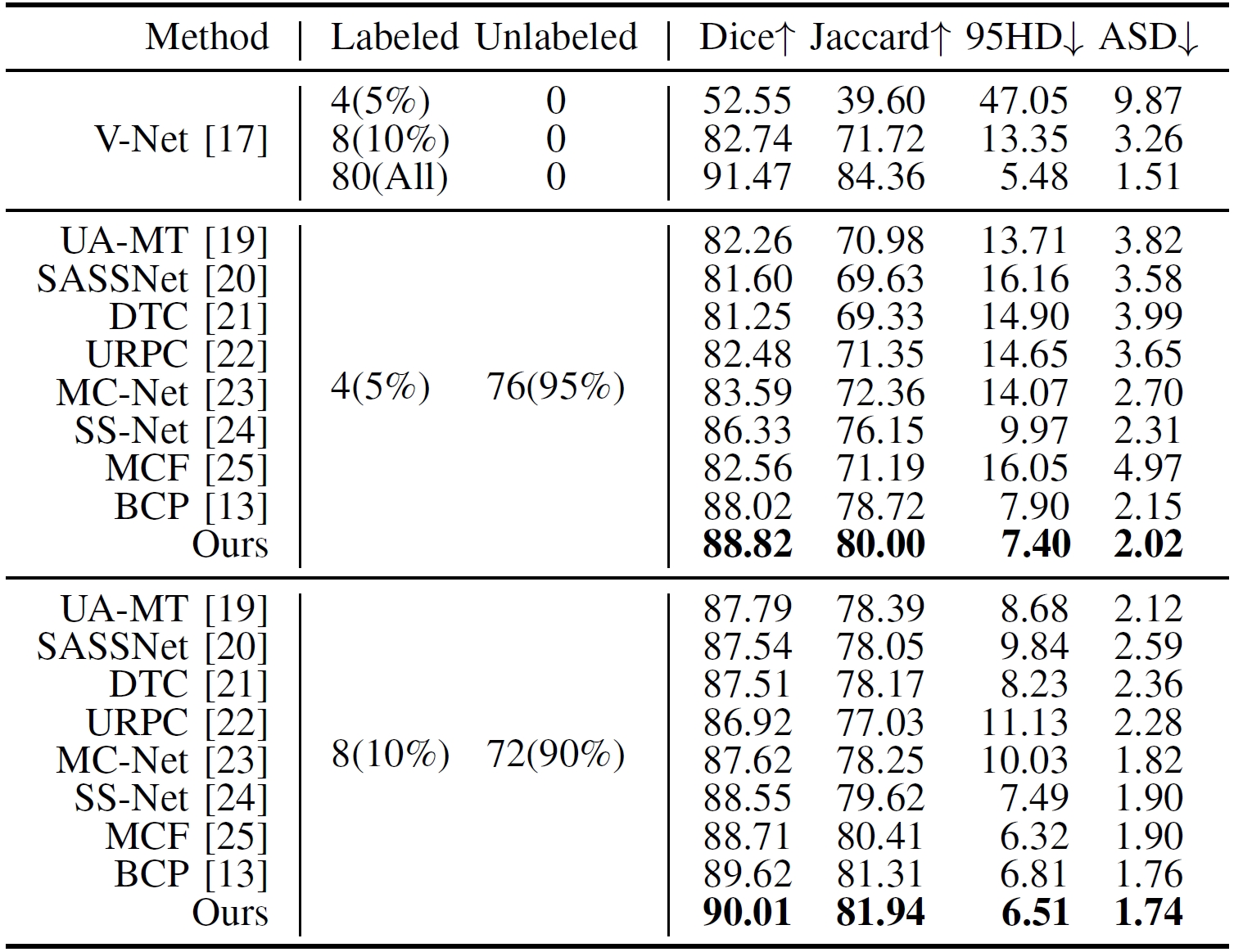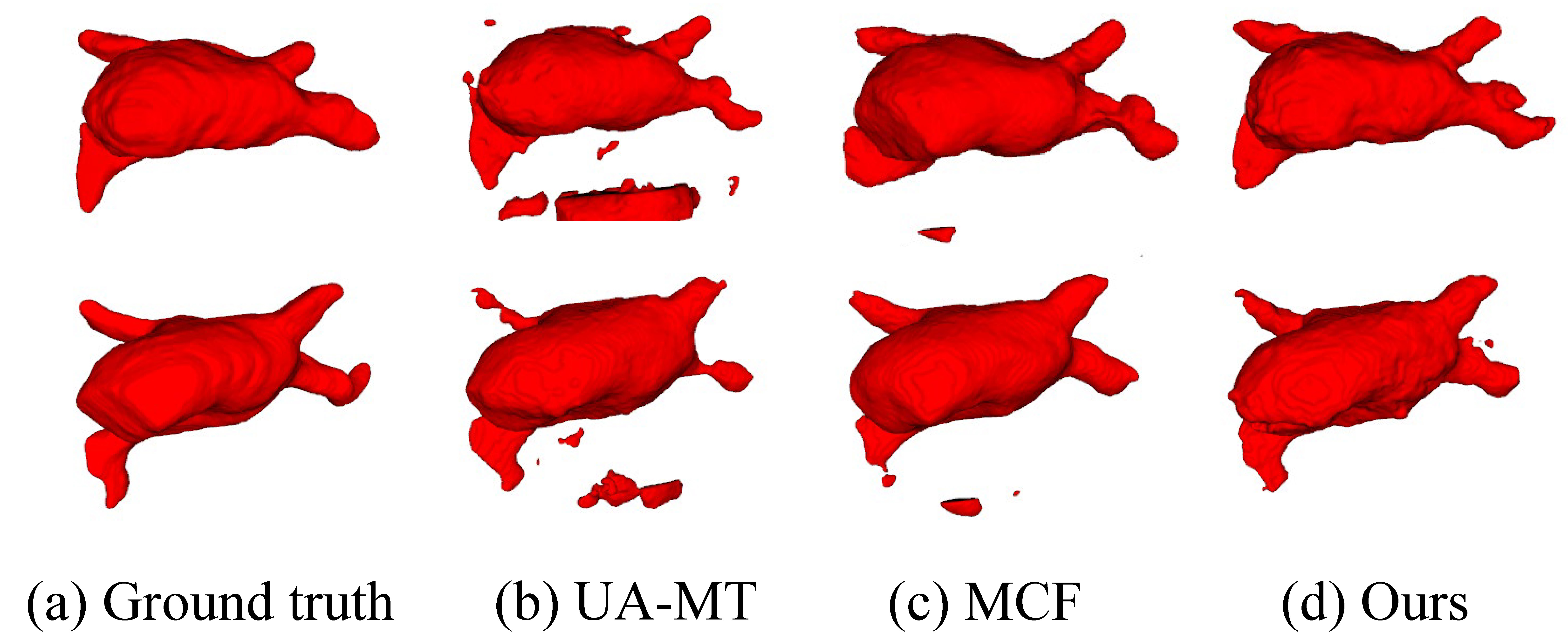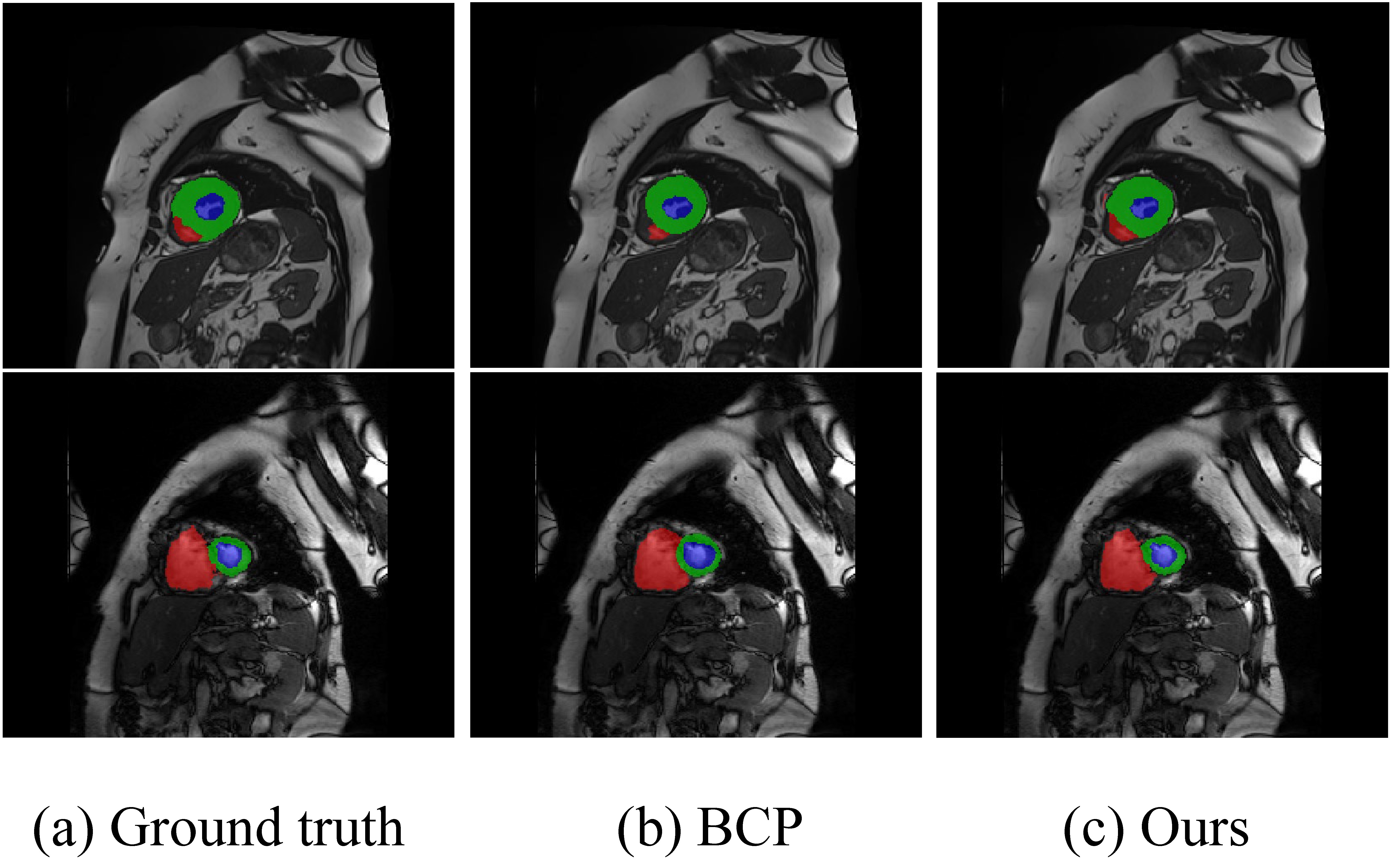Multi-Prototype-based Embedding Refinement for Medical Image Segmentation
毕雅莉1
车恩羽1
陈怡楠1
何垣鹏2
瞿经纬1∗
1西南大学 2北京大学
[PDF] [Code]
Abstract
Medical image segmentation aims to identify anatomical structures at the voxel-level. Segmentation accuracy relies on distinguishing voxel differences. Compared to advancements achieved in studies of the inter-class variance, the intra-class variance receives less attention. Moreover, traditional linear classifiers, limited by a single learnable weight per class, struggle to capture this finer distinction. To address the above challenges, we propose a Multi-Prototype-based Embedding Refinement method for semi-supervised medical image segmentation. Specifically, we design a multi-prototype-based classification strategy, rethinking the segmentation from the perspective of structural relationships between voxel embeddings. The intra-class variations are explored by clustering voxels along the distribution of multiple prototypes in each class. Next, we introduce a consistency constraint to alleviate the limitation of linear classifiers. This constraint integrates different classification granularities from a linear classifier and the proposed prototype-based classifier. In the thorough evaluation on two popular benchmarks, our method achieves superior performance compared with state-of-the-art methods.
Multi-Prototype-based Classification

Architecture of MPER

Quantitative Results

Comparison of segmentation quality on the LA dataset. "Labeled" and "Unlabeled" indicate the number and proportion of labeled and unlabeled samples, respectively. Values of four metrics, Dice coefficient, Jaccard index, 95HD, and ASD, are reported. Numbers in bold indicate the best performance.

Comparison of segmentation quality on the ACDC dataset.
Qualitative Results

3D segmentation visualization on the LA dataset.

2D segmentation visualization on the ACDC dataset.
Reference
@inproceedings{bi2025multi,
|